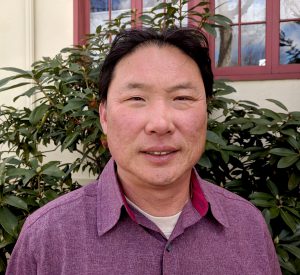Contacts:
Justin Hayes, Executive Director, (208) 861-6134.
Scott Ki, Communications Associate, (208) 345-6933 x 114.
ICL welcomes release of Gov. Little’s salmon report
More work needed to bring back abundant wild salmon and steelhead
BOISE – Idaho Governor Brad Little’s Office of Species Conservation posted the final report and supporting documents of his Salmon Workgroup at the end of Dec. 2020. The 25-page report focuses on policies and actions that reached consensus from all workgroup members and are “tailored to address some of the known causes of decline to salmon and steelhead that originate in Idaho waters.”
The workgroup also adopted the quantitative goals for salmon and steelhead outlined in the Phase 1 and Phase 2 reports prepared by the Columbia Basin Partnership (CBP). As stated in the workgroup report, “the CBP goals represent not only delisting (the low-end goals), but also include the levels of abundance (high goals) that this workgroup and Idahoans desire. The Workgroup views the high goals defined in the CBP Reports as intended to represent ‘healthy and harvestable’ abundance levels that would sustain species viability, significant fisheries opportunity and harvest, a fuller range of ecological values, and an ‘equivalent to empirical estimates of abundance under conditions when populations were previously considered to be reasonably healthy.’”
Justin Hayes, the Idaho Conservation League’s executive director, served on the workgroup. He stated, “Throughout this process, it was agreed many times that the status quo is not working for Idaho’s salmon and steelhead or its people. ICL believes the workgroup’s recommendations, if adopted and implemented, will be useful ways for the State of Idaho and all Idahoans to help our fish. This is a meaningful accomplishment, one that likely would not have happened without this workgroup. We believe that it is a step towards breaking out of the status quo.”
The report includes four overarching principles that workgroup members “desire that the State act on these recommendations in a way that acknowledges and fulfills the following:”
- Recognize Tribal dependence on salmon and steelhead to meet spiritual, cultural, subsistence, and economic needs as a prevailing necessity of their culture and society. Honor federal treaty, executive order, and trust obligations to the Columbia Basin Tribes.
- Make Idaho’s diverse river-dependent industries, communities, and economies whole, while equitably sharing the conservation/restoration obligations and benefits among impacted sovereigns and stakeholders.
- Support policies and actions that go beyond current efforts to recover Idaho salmon and steelhead populations.
- Restore ecological functions throughout the basin necessary for salmon and steelhead to thrive.
Hayes added, “But, as the report makes clear, even if Gov. Little acts on all of the workgroup’s consensus recommendations, they will not restore Idaho’s wild salmon and steelhead to harvestable and sustainable abundance by themselves. More work needs to happen on the ground and in the water and more work needs to happen to bring people together. The forthcoming Columbia Basin Collaborative will bring together the Northwest states, Tribes and other entities. We hope that this builds off of our work and advances bold, urgent actions at regional and national levels.”
The diverse stakeholder representatives that make up the workgroup had lengthy discussions regarding breaching the four lower Snake River dams. And, while it is ICL’s position that dam removal is necessary to restore our fish, the workgroup did not reach consensus on this policy.
ICL thanks Gov. Little, workgroup facilitators and members, and the nearly one thousand people who made public comments or sent them in writing to workgroup members and to Gov. Little. It’s abundantly clear that Idahoans want bold action to restore salmon and steelhead and make all Idaho communities whole.
###

